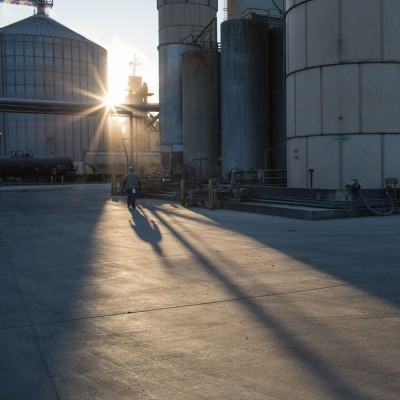special edition: reports from IPPE
AFIA details common pitfalls for FSMA inspections of feed facilities

At the International Production and Processing Expo (IPPE) in Atlanta, Georgia, the AFIA shared details and data gathered from the completed inspections of animal feed holding and manufacturing facilities as the ongoing roll-out of the Food and Drug Administration’s (FDA) Food Safety Modernization Act (FSMA) continues.
FSMA background
After being signed into law in 2011, final rules addressing preventive controls for animal feed were published in 2015 and took effect in November of that year, according to FDA.
Large businesses needed to be compliance with CGMP rules in 2016, with small businesses needing to be compliant in 2017.
Large businesses had to have preventive controls in place in 2017, while small facilities had to meet that requirement in 2018. Also, in 2018, very small facilities needed to be in compliance with CGMP requirements.
By 2019, feed facilities of all sizes – including very small – needed to be in compliance with the preventive controls portion of the regulations.
In the US, about 130,000 people are hospitalized annually for foodborne illness and about 3,000 people die, said Louise Calderwood, director of regulatory affairs with AFIA during her presentation on FSMA. Prior to FSMA, food safety approaches in the US had not seen much change since the 1930s.
The new law is focused on identifying potential hazards and preventing them, she said. FSMA requires companies that are considered to hold animal food meet baseline standards for current good manufacturing practices (CGMPs).
“You have to demonstrate that the people you have on staff are adequately trained to do those jobs, they’re qualified individuals,” she said. “Then we bump it up and all of you that are out there who are doing the manufacturing processing and packaging … you have to move to the preventive controls – you have to have someone trained as a qualified individual, and some of you have attended classes on that, and you have to develop a food safety plan that addresses the hazards that you’ve identified in your hazard analysis.”
Companies that have recognized hazards need to establish preventive controls to address those areas, she said. Businesses importing feed ingredients have to meet new standards established in the foreign supplier verification program while those moving ingredients have to address the sanitary transportation requirements.
FSMA inspections and ongoing concerns
Inspections related to the different topics and portions of FSMA were phased in during the last several years, according to the FDA.
Initially, large companies faced CGMP inspections, followed by smaller locations facing CGMPs inspections, while large sites had to be in compliance with hazard analysis and preventive control rules.
Starting in 2019 and continuing in 2020 animal feed production facilities of all sizes have to be in compliance with the different portions of FSMA and will be facing inspections and enforcement actions, said Leah Wilkinson, vice president of public policy and education with AFIA.
AFIA has been reviewing the results of FSMA inspections and meeting with the FDA’s Office of Regulatory Compliance, said Calderwood. “It’s our opportunity to be your voice directly to the FDA.”
“In the first year, back in 2018, there were a total of 580 inspections completed by FDA on the CGMPs,” she said. “The inspections happened in 47 states, Puerto Rico, Canada, Mexico, Indonesia and India and then of those about 60% were feed manufactures or integrators, about 11% were pet food manufacturers, 24%, or a quarter of the inspections, took place at renderers or ingredient manufacturers and a smattering in warehouses and those sorts of things.”
Out of the initial 580 inspections, 42 facilities were informed that improvements needed to be made, she said. The majority were suggestions for voluntary actions and the rest of “official actions.”
The AFIA was somewhat “troubled” by the number of reviews that indicated improvements needed to be made, she said.
“With our conversations at FDA they indicated to us that this first round of inspections that took place was done at businesses where they’d had a history of compliance issues – these were what we call ‘for cause’ inspections,” Calderwood added. “Something had happened over the last three years that FDA had said, ‘You know what, we want to get back in here and take a look under this new law.’”
Last year, there were about 1,000 CGMP inspections done on facilities in the US and 23 done internationally, she said. CGMP inspections also applied to facilities of different sizes, it was no longer only large facilities that qualified.
In addition, FDA started to review facilities for the hazard analysis and preventive control efforts and sanitary transportation practices along with the CGMPs, Calderwood said. About 220 of the hazard analysis inspections were done domestically and most of the inspections were done by FDA, rather than state inspectors – 95 transportation inspections were completed.
Of the facilities that experienced CGMP inspections, about 75 were asked to make voluntary changes and nine sites were told to make improvements, she said. Among the locations that had hazard analysis reviews, 28 received suggestions for improvement and 16 were told to address specific areas.
Improvements suggested and required
One of the common areas for improvement for companies facing CGMP inspections deals with unlabeled containers, said Calderwood. “That’s an easy place for them to put all sorts of violations, if they don’t feel that things are being handled correctly, it goes in under unlabeled containers,” she added.
“We’re seeing a fair amount on plant maintenance,” she said. “And a fair amount on plant sanitation – here they’re looking at housekeeping – what is the ability of your plant to be kept clean? Is there enough space to carry out the necessary cleaning and maintenance?”
Another common area is pest control, she said.
For facilities facing hazard analysis and preventive control reviews, there have been some discrepancies between the preventive controls in place and what FDA is seeking, Calderwood said.
“In their inspections they’re finding that a lot of members, a lot of you as manufactures are feeling that if you’ve got prerequisite programs in place you don’t feel the need for a preventive control and FDA is pushing back on this pretty hard. FDA does not feel that as an industry a lot of manufacturers are adequately identifying hazards, so we still have some disconnect between us and industry on what we feel are hazards, what requires preventive controls,” she said.
However, the agency has also reported some more basic discrepancies between site practices and FSMA requirements, she said. Some plants have been without food safety plans and others with inadequate recall plans.
Overall, the agency is still looking to establish “voluntary compliance,” Calderwood said.
“They really are hoping to educate, [and] to work with you before having to pull out the big guns and move into full regulatory mode,” she said. “But we are seeing them issuing warning letters, especially if firms are in violation of the new requirements or other regulations.”















